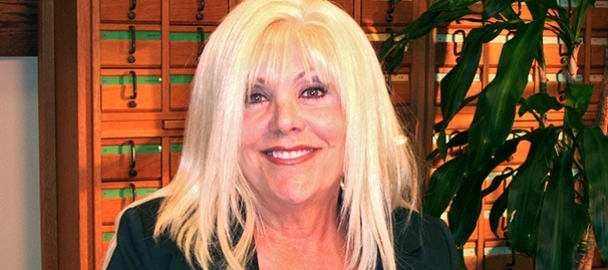
When Virginia Filipan learned she had lung cancer, she knew what to expect. She had lost her two sisters, brother and husband to various forms of cancer, so she figured it was time to plan the last few months of her life. Fortunately for Virginia, oncologist Robert Nagourney, MD, had other plans for her future.
Not Just Bronchitis
It all started with a lingering cough and a bad case of bronchitis just after Christmas. Antibiotics were making her worse, not better, so her physician ordered a chest X-ray, where he saw something suspicious. A subsequent PET (positron emission tomography) scan confirmed his suspicion: Virginia had cancer in both lungs, and it had spread to her bones as well. Stage IV – the most advanced. She was just 58.
Lung cancer is a very difficult disease to treat, with five-year survival rates under 50 percent even when caught early. In the United States this year, it is estimated that more than 213,000 new cases of lung cancer will be diagnosed, and 160,000 will die from the disease. Like many with the disease, Virginia was not a smoker: She worked in a night club and thinks secondhand smoke may be the cause.
Tailored Treatment Improves Outcomes
As Virginia began to research her treatment options, one name kept surfacing: Robert Nagourney, MD. A pioneer in tailoring cancer treatment to the individual, Dr. Nagourney was among the first to successfully apply laboratory techniques to accurately select patient therapies. This breakthrough technique, known as an ex-vivo analysis of programmed cell death, uses a patient’s own cancer cells obtained via biopsy to determine the drug or combination of drugs most effective in killing that patient’s cancer. By exposing each patient’s cancer cells to all of available the agents, the assay tailors treatment to each patient’s unique profile of sensitivity and resistance, improving outcomes.
“We need to be thinking out of the box to get good, meaningful advances,” says Dr. Nagourney. “If you administer the right medication to the right patient, you get a good response. You turn off that which causes those cells to survive and grow.”
For Virginia, Dr. Nagourney prescribed a once-a-day chemotherapy drug, and she has been on it ever since.
“The day of my biopsy, I came into Long Beach Medical Center using a walker because my hip pain was so excruciating,” says Virginia. “Today, everyone tells me I’m a walking miracle.”
Expert Cancer Care
Virginia is one of the 100,000 men, women and children nationwide annually accessing cancer screenings, diagnoses, treatments and services at the Todd Cancer Institute.
The Todd Cancer Institute is among a small number of facilities worldwide to use TomoTherapy, which is used to treat many forms of cancer, including cancers of the prostate, lung, brain, head and neck, bone and soft tissue, some breast, as well as lymphomas and multiple myeloma. The institute is an international leader in Brachytherapy, training more than 80 percent of its practitioners worldwide.
Assay directed approaches to cancer give patients like Virginia renewed hope — and the potential for the excellent outcomes using treatments individualized to their particular need. Clinical trials are now underway at the Todd Cancer Institute using assay directed therapy (ADT) in advanced lung, colon, pancreatic and stomach cancers.